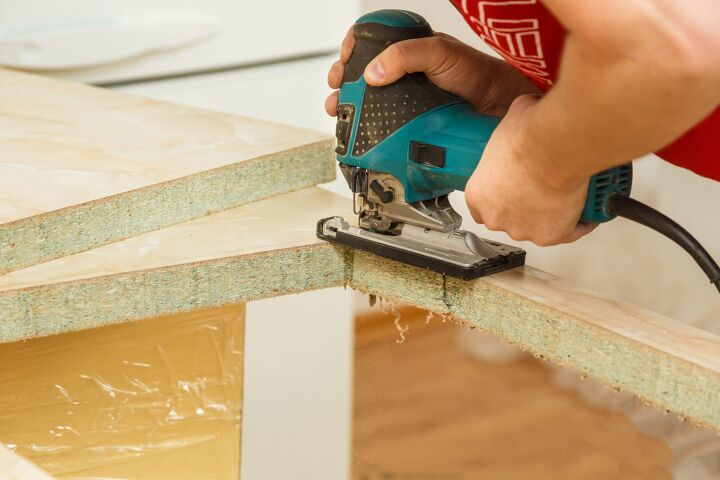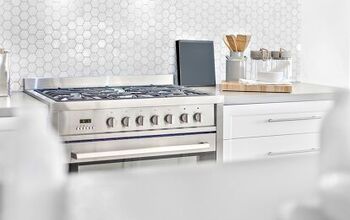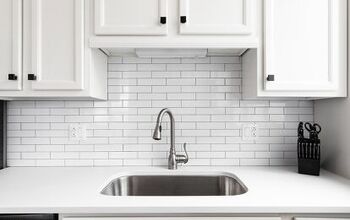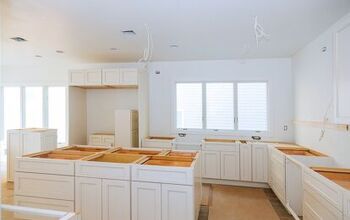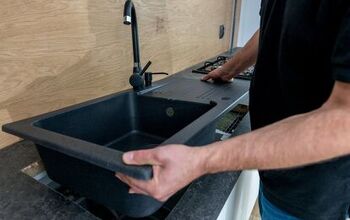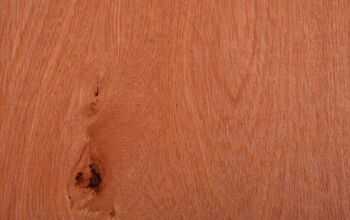What Size Plywood For A Countertop? (Find Out Now!)

Plywood has become a staple of countertop construction, and some countertops are made entirely out of plywood. But plywood has to be thick if it’s going to be supporting heavier materials on top, and the amount of thickness required depends on the type of finish material that’s being used.
In this article, the ins and outs of plywood thickness will be discussed. Read through it so you know what kind of plywood to use when you’re creating a beautiful countertop.
Generally, countertop plywood should be 3/4 of an inch thick if it’s supporting a finish material. If you’re using tile, however, you’re going to need more support, either in the form of additional boards or thicker plywood. For an all-wood or vinyl countertop, barely any plywood will be needed.
Do You Need Countertop Installers?
Get free, zero-commitment quotes from pro contractors near you.

Why Plywood Is Used for Countertops
A variety of finish materials can be used to construct a countertop, including granite slab and tile, butcher-block wood, ceramic tile, and marble tile. Supporting these materials from underneath are plywood boards, and these boards are also built to support the additional weight that will be added to the countertop.
In general, plywood boards are 3/4 of an inch thick, as this thickness can provide adequate support for a range of finish materials. Plywood can also be used by itself without any finish material, and in this instance the plywood is often laminated or painted to make it more smooth and visually attractive.
Again, the above plywood thickness is a mere recommendation; your countertop may require wood that’s thicker or even thinner. Below are more material-specific plywood thickness recommendations.
What Size Plywood
Vinyl
If you’re using vinyl sheeting, then you won’t need to worry all that much about support, as this material is quite flexible and usually doesn’t require significant structural support underneath. And unlike other finish materials, vinyl does not rely on joints. Moreover, this material does not crack, so it won’t have to rely on a supportive substrate.
With this being the case, you can use plywood of any thickness as a support when you’re finishing a countertop with vinyl or plastic sheeting. Individuals who want an affordable yet attractive countertop use these materials, and minimal plywood required makes this even more cost-effective.
Tile
If the finish material above the plywood is going to be some kind of tile—like ceramic tile, natural stone, or granite tile—then you’ll need plywood that’s 3/4 of an inch thick as well as a 1/4-inch concrete slab or fillerboard; the plywood would go under this additional support component.
Tile countertops require thick plywood, and that’s because tiles are definitely the heaviest of the finish materials one can use to make a countertop. You can also use two sheets of 5/8-inch plywood instead of the 3/4-inch plywood and fillerboard combination. Just know that you’ll need at least 1 inch of substrate beneath the tile installation if you’re pursuing the two-sheets method.
Remember that it’s better to be safe than sorry when constructing a tile countertop. In other words, always select the option which provides the most support. Just keep overall thickness in mind (plywood thickness + tile thickness) as you don’t want to construct a countertop that’s absurdly large.
Wood
If you’re finishing the countertop with wood, then any thickness of plywood can be used. In this case, the thickness is actually more of a personal preference, as again the finished height of the countertop is the thing you should be most concerned about.
You can use 5/8-inch plywood or standard 3/4-inch plywood and then stack more wood on top until you reached the height you want. A common type of finish wood is butcher-block wood, but you can use plywood itself as a finish material. Just make sure it’s laminated or painted—as was mentioned before—so it’s smooth and nice to look at.
Do You Need Countertop Installers?
Get free, zero-commitment quotes from pro contractors near you.

Which Plywoods Are Best
There are many kinds of plywood, and using the right kind will ensure your countertop construction goes off without a hitch. Below, the common types of plywood are listed. Keep in mind that some plywoods are not ideal for countertop construction.
Interior Plywood
Interior plywood is plywood that’s used specifically indoors. This can be made of either hardwood or softwood, but the main thing here is that this wood is designed for dry areas where moisture really isn’t a factor. Using indoor plywood for a countertop is a good move, as it’s quite likely the wood won’t be exposed to moisture often. For this wood, there are a variety of grades and finishes available.
Exterior Plywood
Exterior plywood is plywood that can withstand the elements, mainly rain and snow. There are many kinds of exterior plywood, with most being rough; the wood can, however, be finished. This kind of plywood is usually used as siding for a house, barn, or another kind of structure.
Structural Plywood
Structural plywood is plywood that’s specifically used for building, and when used indoors it can make a space look more rugged and rustic. You’ll rarely find structural plywood that’s smooth or finished, and that’s because this wood utilizes different resins and bonds to ensure soundness. Moreover, structural integrity is more important than visual appeal, and that’s why you’ll usually see structural plywood being used in places that are—for the most part—hidden from the human eye.
Marine Plywood
One can use marine plywood when moisture is a top concern. Homes in areas that experience heavy rain or constant humidity are often constructed using marine plywood. There are many types of marine plywood, which means it can be used both indoors and outdoors.
Note: If you’re constructing a mainly wood countertop—and you know that the countertop is going to get wet often—then you may want to consider using a type of plywood that can withstand frequent moisture exposure. This may, however, not be common practice, so ask a professional what they think is best when you’re having a countertop constructed.

Matt loves everything DIY. He has been learning and practicing different trades since he was a kid, and he's often the first one called when a friend or family member needs a helping hand at home. Matt loves to work with wood and stone, and landscaping is by far his most favorite pastime.
More by Matthew Mountain



